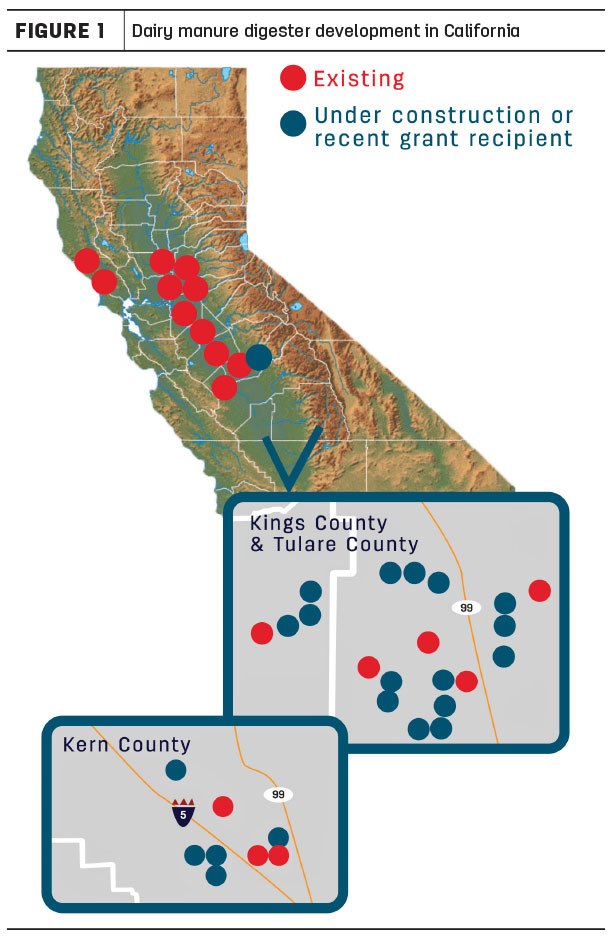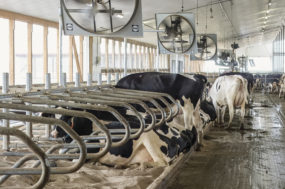California’s third annual Rethink Methane Symposium was recently held to showcase the state’s efforts to use renewable natural gas to help meet ambitious air quality, climate and economic goals. More than 300 attendees were anxious to hear an update on the progress the dairy industry is making.
While California’s goal for dairy methane reduction is unique, the work being done in our state can serve as an example of how producers everywhere can tie environmental stewardship and economic opportunity.
To provide some background, the California Legislature approved Senate Bill 1383 (Lara) in 2016, making California the first and only state to-date with formal plans for reducing dairy methane emissions. The goal is to reduce dairy manure methane by 40 percent below 2013 levels by 2030. Reductions efforts are focused on manure management while still researching potentially cost-effective methods for reducing enteric emissions.
California dairies are already making ambitious strides to voluntarily meet this goal and avoid potentially costly regulation in the future. California’s efforts are built on a voluntary, incentive-based program with significant grants and other incentives available to its dairy farm families.
Three main strategies are being used: research, methane avoidance, and methane capture and utilization. The dairy industry is working collaboratively with university researchers, the state departments for air, energy and agriculture, and public utility providers.
Grant programs are helping producers develop digesters in the effort to capture and utilize methane in addition to developing non-digester (alternative) manure management technologies to avoid methane emissions. Through ongoing research, partners are working to better understand emissions, quantify environmental benefits, identify future opportunities and validate reductions.
While digesters require a significant investment, they also provide opportunity for clean, renewable energy. This is an investment California is banking on to not only reduce methane emissions but to reduce reliance on fossil fuels and improve air quality.
The state has committed more than $260 million for dairy methane reduction efforts, primarily for digester development and biomethane infrastructure, in addition to funding for non-digester technologies. The state’s $260-million-dollar investment is being matched by private funds on a roughly 3-to-1 basis, resulting in more than $1 billion in total investments.
With the recent momentum, California now has more than 20 operating digesters with about 20 more coming online soon (Figure 1).

With more grant funding to be administered, it is conceivable that 100 to 120 digesters will be operating in California within the next four to five years.
Using digesters to create renewable energy provides unique opportunities for the environment and for the dairy industry. The captured methane can be used to create electricity or carbon-negative transportation fuel. With the potential development of a hydrogen market, yet another economically viable use for methane may exist down the road.
As California dairies are on the clock to reduce methane, the industry is working collaboratively with stakeholders to put solutions in place now while considering the best long-term options for the environment.
To further state biomethane use, the California Public Utilities Commission is directing the implementation of at least five projects to inject dairy biomethane into the natural gas pipeline for use as carbon-negative transportation fuel. Each project will likely consist of multiple dairy digesters (a cluster) with centralized biogas clean-up and conditioning facilities.
A pilot mechanism to provide a long-term process for fuel credits is currently being developed, and there is still much more work ahead to create market certainty and stability for future transportation fuel projects.
Despite the challenges ahead, California’s digester development efforts are already benefiting the environment and producers. California now leads the nation in dairy methane reductions made using digesters. Additionally, the digesters are starting to help producers improve their bottom line by providing an additional source of farm revenue.
While digesters may not be cost-effective for all farms, California’s Alternative Manure Management Program provides financial assistance for non-digester manure management technologies. This includes solid-liquid separators, non-flush system improvements or conversions and pack barns, among other technologies and strategies.
The first 17 awardees were recently announced. The California dairy community looks forward to working with researchers and agency staff to see this program succeed as part of the overall methane reduction and sustainability effort.
Dairy farmers have always been environmental stewards, doing their best to manage available resources. That’s why California dairies continue to feed cows agricultural byproducts – including almond hulls, citrus pulp, cotton seeds and tomato pomace. Our farmers also make use of the abundant California sunshine, with more than 100 dairies across the state harvesting solar energy.
The average energy capacity of solar installations on our dairy farms is 1 mega-watt, enough to offset a decent portion of on-farm energy use. These strategies, along with energy and water conservation efforts, are examples of how California dairies do their part to improve environmental sustainability while coping with the rising costs of regulatory compliance, labor and energy.
This long history of dedication, collaboration and continual improvement is why the state of California is choosing to invest in its dairy farm families. We continue to learn from innovators and researchers across the country and the world – and, likewise, lessons will be learned from California’s efforts. ![]()
Go to Dairy digesters: Turning manure into renewable energy to learn more about the methane reduction initiative across California’s dairy industry.

-
Michael Boccadoro
- Executive Director
- Dairy Cares
- Email Michael Boccadoro






